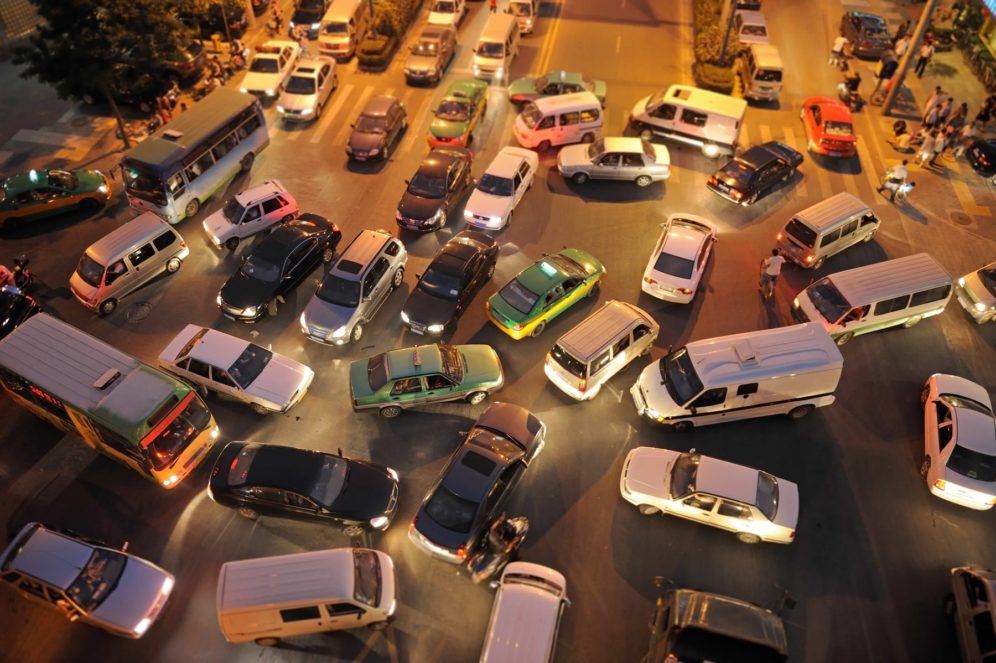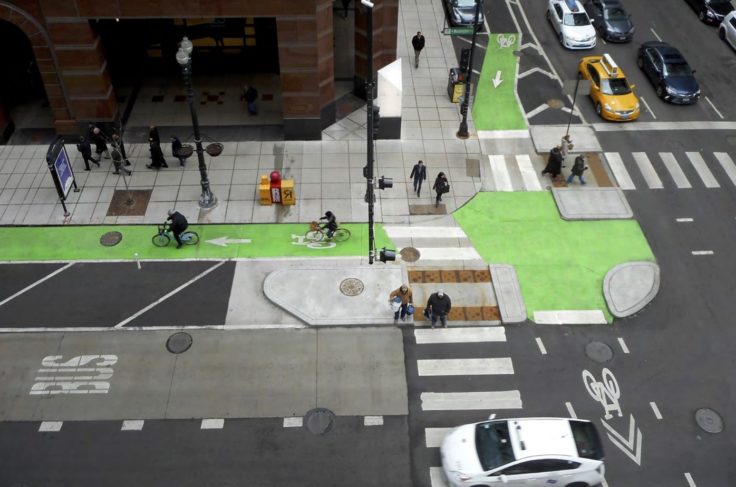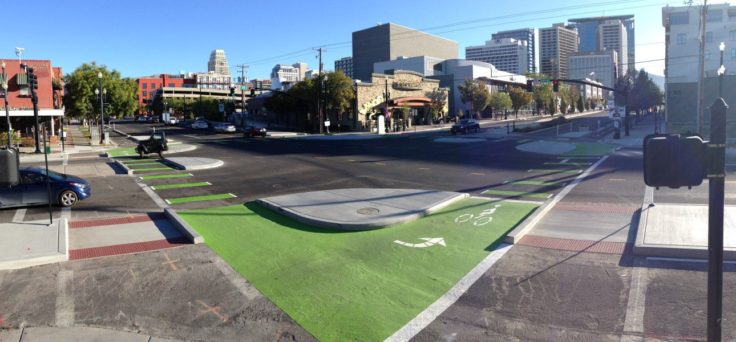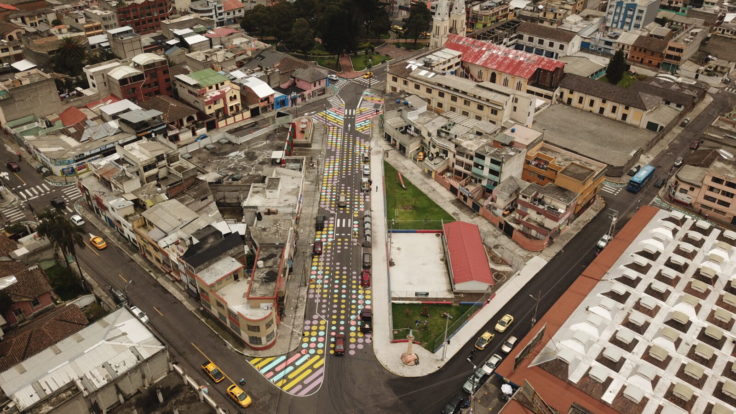
August 17, 2022
We Need to Make Intersections Safer for Pedestrians and Cyclists
World Pedestrian Day on August 17th recognizes the anniversary of the first recorded vehicle-related pedestrian death in 1897. More than 130 years later, pedestrians and cyclists are still at high risk on many city streets.
Globally, traffic crashes cause 1.3 million deaths yearly, and fatal and non-fatal crashes are estimated to cost economies approximately USD 1.8 trillion between 2015 and 2030. More than half of the fatalities caused by traffic crashes are people outside vehicles: pedestrians, cyclists, and motorcyclists. What’s more, low and middle-income countries make up 93% of global traffic-related fatalities, despite these countries owning only 60% of vehicles globally.
In the U.S. alone, an estimated 1,000 cyclists die and 130,000 are injured in crashes each year, with one pedestrian dying from a vehicle crash every 75 minutes. Pedestrian and cyclist crashes may even be underrepresented in many reports and statistics. As urbanization and vehicle ownership rises globally, improving road safety and pedestrian and cycling infrastructure is more critical than ever if we are to mitigate fatalities to plan cities for people, not cars.
Safe intersection design is necessary to reduce traffic crashes, improve safety for all road users, and encourage more people to choose walking and cycling.
Intersections and Road Safety
There are several ways cities can make their streets safer for all road users: reducing injuries and fatalities by physically separating cars from pedestrians and cyclists; reducing vehicle speeds; timing traffic light signals; self-enforcing speed through design features; and many other approaches. Intersections are critical places for urban planners to consider, given that road users are typically forced to interact even when cycle lanes or sidewalks are available. In the U.S. in 2020, 15% of pedestrian and 26% of cyclist fatalities — and 41% of pedestrian and 55% of cyclist injuries — occurred at intersections.
One study conducted in New York City comparing crashes involving bicycles and vehicles at orthogonal “right-angled” intersections, non-orthogonal intersections, and non-intersection street segments found that 60% of crashes occurred at intersections. While fatal crashes happened less frequently at intersections due to the lower speed of vehicles and cyclists, non-fatal crashes and injuries occurred more frequently at intersections, where multiple modes of transport converge from various directions and result in reduced visibility and response time. Those in the urban planning and transport sectors must recognize the importance of creating safer and more cohesive intersections that emphasize walking and cycling, rather than vehicles.

Design Elements for Safer Intersections
Safe intersection design is necessary to reduce both non-fatal and fatal traffic crashes and improve safety for all road users, including drivers. The following three safe intersection design approaches not only make pedestrians and cyclists more visible to drivers but give priority to these modes while slowing down vehicles. For more elements of safe intersection design, see Intersection Treatments, Don’t Give Up at the Intersection, and related resources from NACTO.
Protected intersections keep cyclists physically separated from vehicles all the way through the intersection. Key elements of protected intersections include bikeway setbacks that increase visibility and reaction time to turning vehicles; corner islands that separate people on bicycles from vehicles and make turning tighter and harder for drivers; bike queue areas that give cyclists a head start; and pedestrian islands that reduce crossing distances and exposure to turning vehicles. These elements together help to improve visibility, encourage more predictable movements, and foster comfort and safety for pedestrians and cyclists.
Salt Lake City, USA constructed a protected intersection in 2015 at the intersection of West and South Streets, one of the city’s widest junctions. Protected bike lanes separate cyclists from motor vehicles, minimizing conflicts in the intersection. This design allows cyclists to make left turns safely in two stages without having to merge with vehicle traffic. A before and after video analysis of the protected intersection in Salt Lake City found that more pedestrians stayed within the crosswalk when crossing, and cyclists showed a reduction in conflicting behaviors such as crossing on pedestrian crosswalks and making dangerous left turns.

Raised crossings give physical priority for pedestrians and cyclists to safely cross the street by forcing drivers to yield and slow down. A raised crossing is level with the sidewalk and cycle lanes on either side and extends the sidewalk and cycle lanes across the street. This makes pedestrians and cyclists more visible and improves comfort and accessibility (i.e. for people using wheelchairs or strollers) when crossing. Raised crossings also function like a speed table, forcing drivers to slow down to clear or turn over them.
Fortaleza, Brazil used raised crossings to transform a downtown street once congested with cars, and reclaimed space for pedestrians and local businesses. Barao do Rio Branco Street is a busy street with high foot and vehicle traffic but narrow sidewalks, resulting in pedestrians often walking in the street with mixed traffic. Due to the unsafe and narrow spaces for pedestrians, crashes happened frequently — 70% more often than in the rest of the city with 91 pedestrians killed in 2018. The city repurposed one travel lane into an interim sidewalk extension with 3 raised crosswalks, 8 improved intersections, 32 curb extensions, and 32 improved crosswalks. After the redesign, about 1,000 pedestrians per hour safely crossed the newly raised crossings, and vehicles traveling above 30 km/h dropped by 65-84 percent. With safer and wider sidewalks, more pedestrians (especially seniors, children, and caregivers), local businesses, and delivery carts could safely move along the street.

Compact corners make it easier and faster for pedestrians and cyclists to move through an intersection. Additional spaces on the corner of the sidewalks reduces the crosswalk distance from one end to the other and minimizes pedestrian exposure to moving vehicles. A tighter turning radius for vehicles also forces drivers to slow down when turning, making it safer for those walking and biking. Compact corners are low-cost to implement, and can be piloted using quick-build materials like painting compact corner areas on the street and adding planters or bollards to designate spaces.
Quito, Ecuador implemented a quick-build street design to transform a corridor with a high frequency of crashes into a more pedestrian-friendly space. The corridor had a total of 39 crashes over three years due to wide traffic lanes, large corner radii, and slip lanes, which resulted in high vehicle speeds and long, dangerous crossings for pedestrians. The redesign featured quick-build compact corners painted at intersections, as well as narrowing vehicle lanes and improvements to 15 pedestrian crossings. The surrounding community responded positively to the redesign, with 68% of surveyed respondents feeling ‘safer’ and 50% feeling ‘very safe’ or ‘quite safe’ crossing the street.

While one of many considerations for designing better streets, safe intersections need to be a priority to ensure pedestrians, cyclists, and drivers are all protected in their mobility. Intersections with safe design elements have significant potential to reduce traffic-related injuries and fatalities and to encourage more people to walk and cycle overall. Sidewalk and cycle lane safety features should certainly not end at intersections. All types of crashes — whether light or severe — should be mitigated and addressed, not just along high-speed and straight roadways with high fatality rates, but also at precarious intersections.
People-focused street design should extend through intersections using elements such as protective barriers, raised crossings, and compact curbs to make walking and cycling more accessible. Urban planners and policymakers should also review their city’s road safety strategies and address the political barriers — whether it be knowledge or implementation gaps — that hinder investment in better intersections. Given that many safe road design elements are relatively fast and cost-effective to pilot and scale, cities must recognize their significance in creating safer and more inclusive built environments for everyone.
